Fly-Fishing Gear

Reel-In Your Adventures
If you are just getting started with fly-fishing, make your first cast a memorable one with expert recommendations on gear.
Fly-Fishing Components
Here's a complete guide to fly-rod components.

How to Pick the Right Fly Rod
How to Choose a Fly Rod
Choosing the right fly rod is determined by size, weight (differs based on the fish species and conditions), application, length, action and power.

A primary aspect to consider is the size and strength of the fish you intend to catch. For instance, will you be fishing for an 8-inch Brook Trout or a 70-pount Tarpon? Questions like these will help you choose an appropriate fly rod by size and stiffness.

Begin by determining rod weight based on the target species because different fish require different rod weights.
For instance, a mid-sized Trout will require a 4, 5 or 6 weight rod while a Salmon may need a 7, 8 or 9 weight rod.

Fly Rod Weight
The size of the fly rod is determined by the weight of the fly line it is designed to cast.
For instance, heavier lines can cast farther, cut through the wind more effectively, and assist in casting larger and heavier flies. On the other hand, lighter-weight lines allow for delicate presentations of smaller flies.
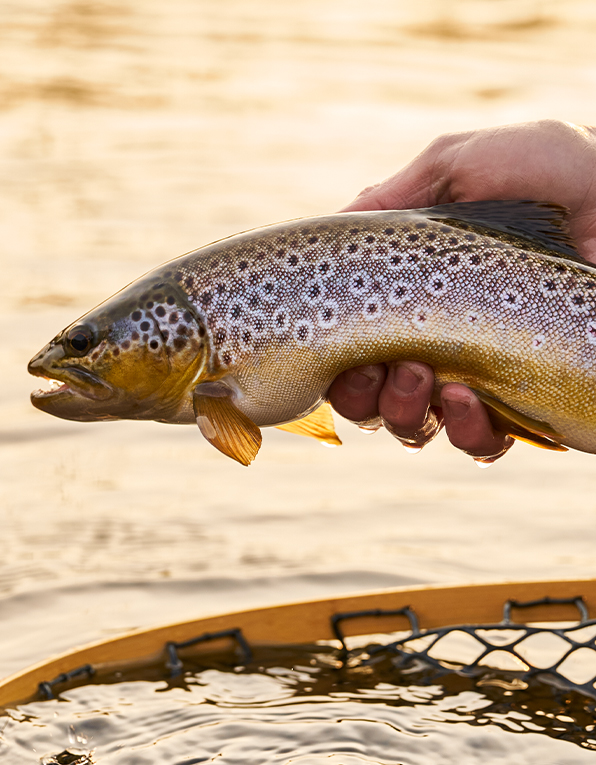
Suggested fly rod weight for targeted fish species
- 5- weight to 6- weight rods are the most versatile and common as they can target a wide range of species.
- For small fish in creeks or ponds, have 0-weight to 3-weight rods.
- It's also critical to match your line weight to your rod weight, as they go hand in hand. Generally, a 5-weight rod is a great all-around option, while a 6-weight is suitable for larger Trout, bass, or smaller steelhead.
- For large saltwater fish, use a 10-weight rod and line.
While a heavier-weight fly rod does not guarantee a farther cast, proper technique plays a significant role in achieving longer casts.
Ultimately, selecting the right rod weight and length based on your fishing needs is crucial in ensuring an enjoyable and successful fishing experience.
If you need help selecting the right fly rod for your fly fishing adventures, answer these questions by Orvis to help you hook up with the right match.
Fly Rod Action
Fly rod action, also known as rod's flex pattern is determined by where the rod bends when it is loaded. Fly rod action can be classified into three categories: fast, medium/moderate and slow.
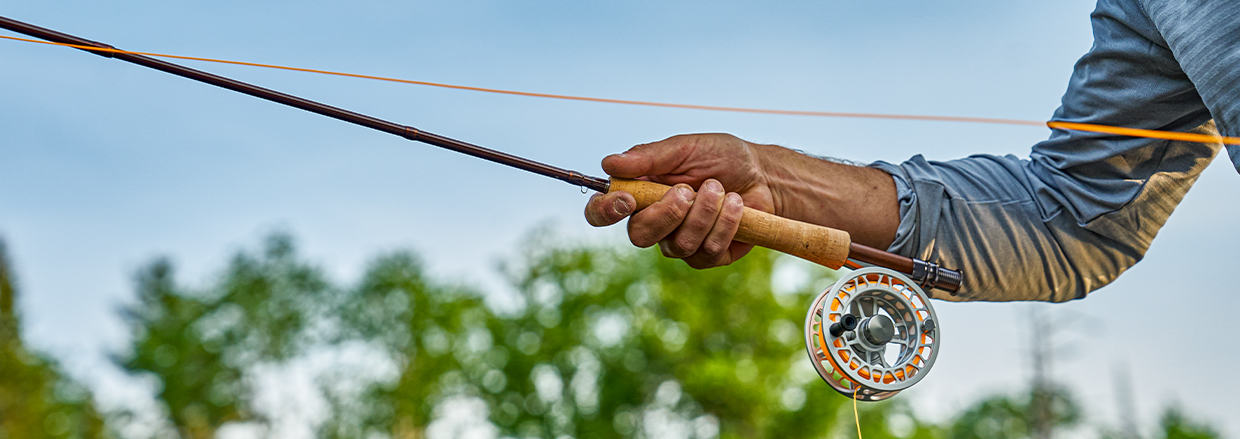
Fast Action Rods
- It is referred to as fast-tip or tip action rods.
- These rods tend to be powerful and stiff near the handle section and most of the length of the rod.
- Great option to fight strong and large fish.
- Ideal for saltwater anglers or anyone who needs to cast through the wind.
- Made from graphite/boron mix.
- They flex at the tip, while the rest of the rod flexes a little or none.
Medium/Moderate Action Rods
- It is referred to as moderate action and is split into moderate-fast and moderate.
- All-rounder rod – offers the best balance of performance and versatility. It is ideal for anglers who want one rod to do it all.
- Made from fibreglass or graphite.
- Bend from the tip to about a quarter of the distance down the rod.
- Ideal for Trout, presenting dries, swimming streamers and dipping nymphs.
- It can feel like a fast action but with more flexibility. It will help you cast for and fight small fish.
Slow Action Rods
- The most preferred rod for close casts and delicate presentations with dry flies.
- Casting for short distances.
- Anglers prefer slow action rods to fish in small streams.
- Typically made from bamboo and fibreglass.
Picking the Perfect Leaders for Fly-Fishing
If your fish isn’t striking, or your fly is landing off target, chances are it’s your leader.
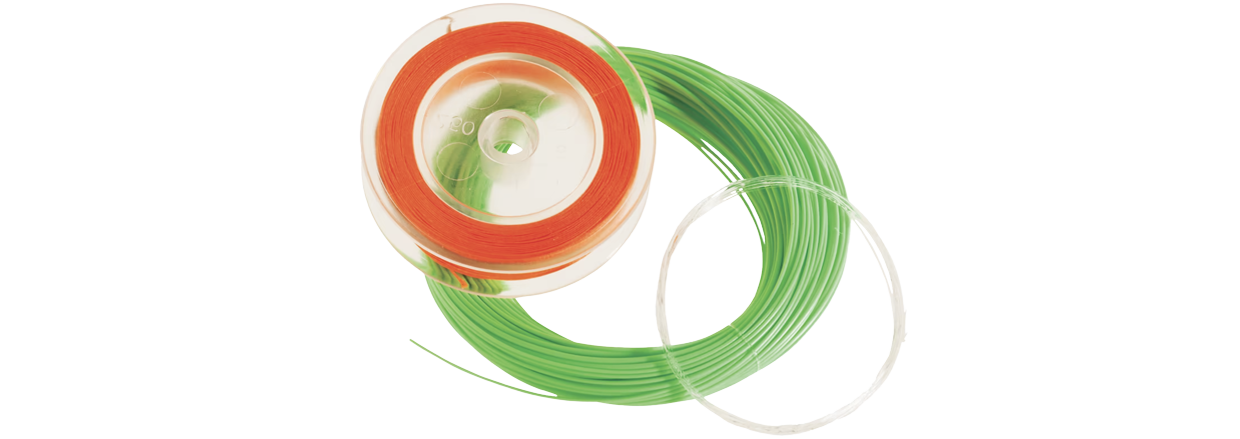
Leaders are among the most basic essentials that increase your performance on water. When you can’t get a drag-free drift or you are not able to land on target, don’t automatically blame your casting. Here are a few things to understand while picking the right leader for your fly-fishing day.
Fast Action Rods
The rule of thumb is to use the length of the rod for the length of your leader. You can run a bit shorter or fairly longer based on fish species and conditions.
Typically, an 8-foot, 6-inch rod will need a 9-foot leader, while shorter stream fishing rods will need something shorter.
In clear water, you might want to get the fly line farther from your fish and opt for a longer-than-standard leader.
You will need a longer leader in lakes for longer casts and deeper-sinking flies.
Leader Thickness
The ‘X’ refers to the diameter of the tippet end. Leaders range from 0X to 8X. The larger the number, the smaller the tippet diameter. (8X is very thin while 0X will be hefty).
Note: The same rule applies to fly hooks, where the bigger the number, the smaller the hook, and likewise.
To pick the right leader, take the size of the fly you wish to cast and divide it by three or four to get your tippet diameter.
- If you are fishing a size 16 fly, you need a 5X or 4X tippet.
- If you are flying a 16 fly and lightweight dry fly, you err on a lighter end and use a 5X tippet.
Tip: Starting with fly size can help you select your leader to match your target fish. The bigger and heavier flies yield bigger fish. Having a thicker leader will mean a stronger “test” weight.
The success of smaller dry flies is often based on presentation: having a smaller/lighter leader will present your fly more delicately onto the water’s surface.
Which Material Leader to Choose: Monofilament vs Fluorocarbon
The material of your leader makes another significant contribution to the type of fishing.
- A monofilament (nylon) leader will float and is a fine choice for dry flies. It’s more economical than a fluorocarbon. A stretchy nylon helps in easy knot tying and less likely to slip.
- Fluorocarbon leaders are premium and clear, and they sink. It does not absorb water and is abrasion-resistant. These characteristics make fluorocarbon leaders better suited for nymphing or fishing in clear waters with spooky fish.
How to Choose the Right Tippet Size
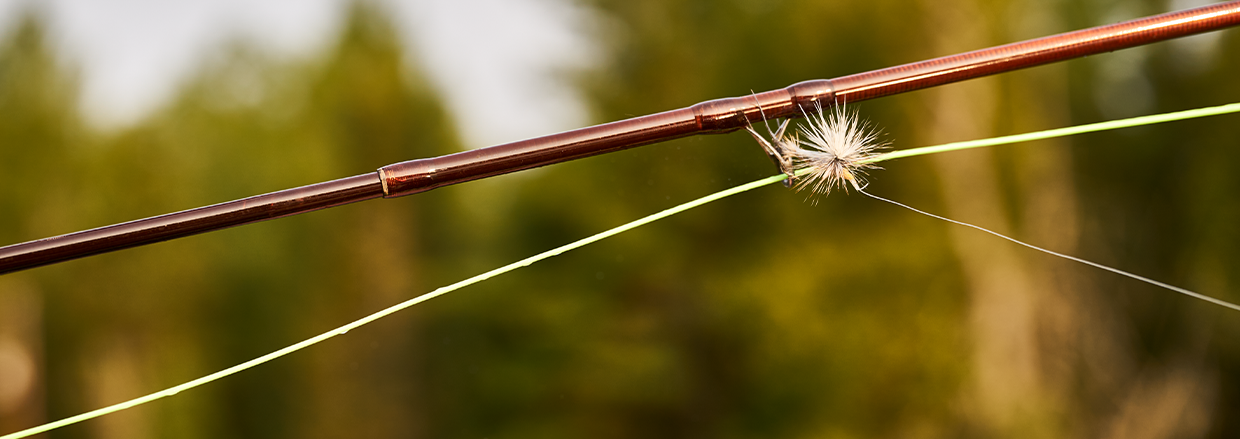
Choosing the tippet size is based on the selection of your fly, sometimes water clarity and the size of the fish you are after.
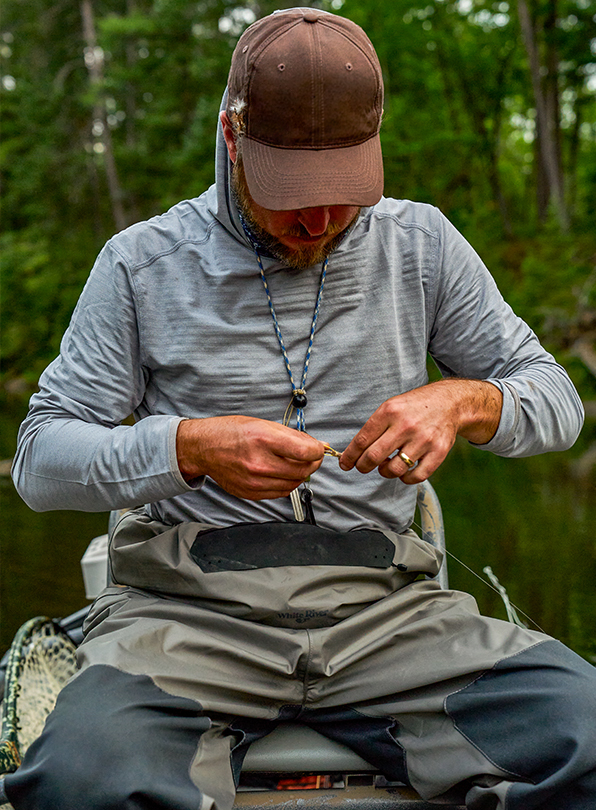
Orvis Tippet Chart for Fly-Fishing
A tippet with the right balance of stiffness and flexibility will help you achieve a fly cast that lands lightly on the water.
Tip: The tippet should be stiff enough to straighten the entire leader for accurate casting and be flexible to allow the fly for natural movement. A heavy tippet could hinder the fly’s natural movement, while a lighter tippet could cause the leader to coil. In addition, flies that are too big and air-resistant for a tippet might spin and twist during casting.
Here are a few things to consider when considering the tippet size:
- If a tippet is too big, it won’t fit through the eye of your fly.
- If you tie a thin tippet to a heavy hook, where the wire diameter of the eye of the hook is a lot greater than the diameter of the tippet, chances are your knots will slip and not hold.
- For instance, if you are fishing a size 16 dry fly with a 5X tippet and wish to fish a size 6 streamer, have a heavier tippet like 2X to avoid slippage of your clinch knot.
Understanding Tippet Sizing: When to Use Lighter Tippet & Heavier Tippet:
- Choose a heavier-size tippet if the water is dirty or choppy, and the fish might not get a close look at your fly.
- Use a heavier tippet if your fly is highly air resistant, fishing in windy or several conflicting currents that could cause a fly an unnatural drag.
- Consider water temperatures while choosing tippet size. When Trout streams go above 20°C, they have difficulty receiving enough oxygen. In these situations, playing too long might exhaust them. Use a heavier/stronger tippet than your usual size and play fish quicker. You might not get as many strikes as possible, but you can release fish unharmed.
- Use a lighter tippet if you are fishing in finer waters and the fish are spooky, or if you are fishing in tricky currents and the drag is a problem to lessen the unnatural drag on your fly.
Rule of Three:
Divide the hook size by 3 to get the appropriate tippet size. Example: With fly size 16, dividing by 3 gets you 5.33. You can use a tippet 5X in most ideal situations.
How to Choose a Fly Reel
When choosing a fly reel, consider the body, spool, and drag components for smooth spinning, user-friendliness and durability. Consider the reel's drag system based on the type of fish you'll be catching.
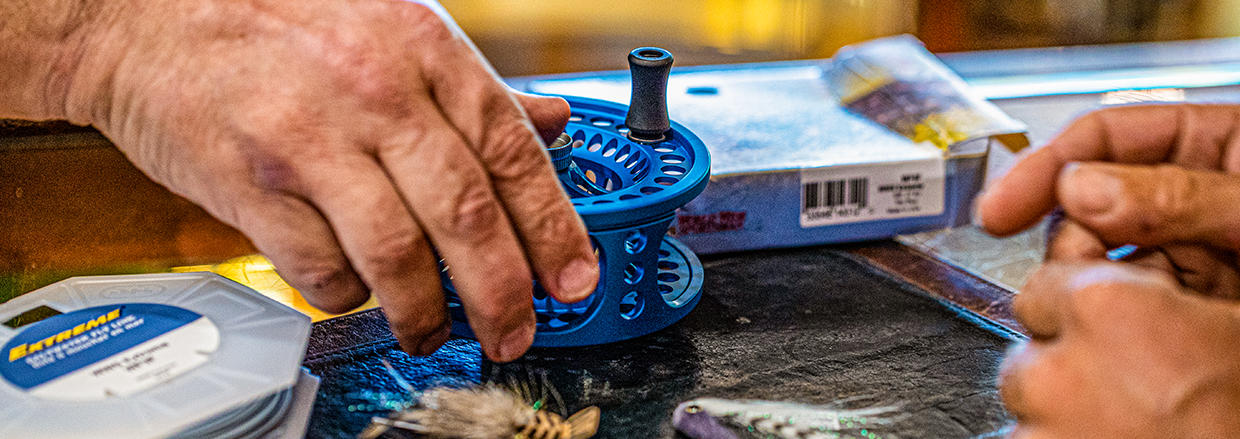
A few factors to help you choose the perfect fly reel in every situation:
Reel size:
Reels are designed to match two consecutive rod weights and vary in physical weight and diameter. Lightweight reels are good for reducing arm fatigue, while heavier reels counterbalance heavy rods.
Target Species:
Consider the target species to determine the ideal line weight and rod.
For freshwater species, match the reel size to the rod and consider a size larger for longer sink tips. For saltwater fish, opt for a strong drag and a larger reel with a sealed drag for protection against saltwater corrosion. Remember to wash saltwater reels after each use to maintain their condition.
Saltwater reels vs. Freshwater reels:
Saltwater fly reels are usually stronger and larger than freshwater reels. This helps in catching larger fish in tougher conditions. Saltwater reels are designed with corrosion-resistant materials and sealed drag systems to withstand salt exposure.
Freshwater fly reels are often light-weight, compact and focus on finesse and casting in cleaner water environments. These reels are designed with aluminum, plastic or other materials that may not be as resistant to corrosion.
Design:
Fly reels with more precision machining are lighter with a higher cost. A well-balanced reel should match the fly rod and have proper weight distribution. The arbor size (diameter of the spool's interior) is crucial for fast line pickup and to prevent line memory. Porting involves cutting holes in the metal to help reduce weight. Modern reels offer lightweight and clean designs with increased arbor size and innovative drag systems.
Essentials for Fly-Fishing Beginner

As you enter the world of fly-fishing, set yourself up for success with the tools that bring the best out of your fishing trip. Below are a few must-haves for your first fly-fishing trip:
- Appropriate fishing clothing and footwear for conditions.
- Well-designed sling pack or a vest to keep necessities within reach.
- The most recommended fly rod for beginners: 5-weight, 9-foot fly rod.
From performance-driven gear to comfortable waders, find all your fly-fishing needs at Bass Pro Shops and Cabela’s Canada.